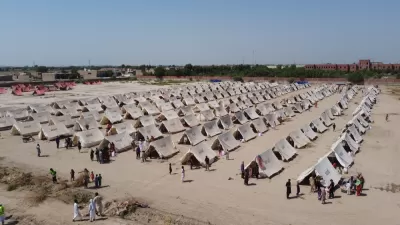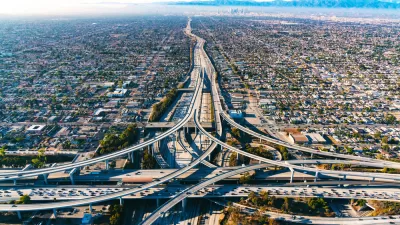"The United Nations has set two huge energy-related goals for the coming century," says Brad Plumer. While bringing electricity to 1.3 billion people without it and curtailing fossil fuel use seem to be at odds, the U.N. has a plan to achieve both.
"Last year, Secretary-General Ban Ki Moon unveiled his “Sustainable Energy for All” initiative, which aims to bring electricity to 1.3 billion people by 2030, and double the amount of renewable energy in the world, and double the pace at which the world gets more energy-efficient," reports Plumer. "The estimated price tag? Some $48 billion per year, financed by the private sector, governments and the public sector."
"In theory, assuming this plan was doable, it could be compatible with those broader climate goals. At least, that’s the conclusion of a recent study in Nature Climate Change, which found the world would still have a good chance of staying below 2°C if it achieved all three of these goals by 2030. (But, the modelers caution, those three goals wouldn’t be sufficient; limits on carbon emissions would likely also prove necessary. See Alex Kirby’s write-up for more detail.)"
"That said, other experts are skeptical that tackling climate change and energy poverty at once is as easy as it sounds," adds Plumer. "Roger Pielke Jr., an environmental studies professor at the University of Colorado, has pointed out that the international community’s definition of 'modern energy access' tends to be pitiful — it means providing people with a mere 2.2 percent of the energy that the average American uses."
FULL STORY: Can the world fight climate change and energy poverty at the same time?

Alabama: Trump Terminates Settlements for Black Communities Harmed By Raw Sewage
Trump deemed the landmark civil rights agreement “illegal DEI and environmental justice policy.”

Planetizen Federal Action Tracker
A weekly monitor of how Trump’s orders and actions are impacting planners and planning in America.

The 120 Year Old Tiny Home Villages That Sheltered San Francisco’s Earthquake Refugees
More than a century ago, San Francisco mobilized to house thousands of residents displaced by the 1906 earthquake. Could their strategy offer a model for the present?

In Both Crashes and Crime, Public Transportation is Far Safer than Driving
Contrary to popular assumptions, public transportation has far lower crash and crime rates than automobile travel. For safer communities, improve and encourage transit travel.

Report: Zoning Reforms Should Complement Nashville’s Ambitious Transit Plan
Without reform, restrictive zoning codes will limit the impact of the city’s planned transit expansion and could exclude some of the residents who depend on transit the most.

Judge Orders Release of Frozen IRA, IIJA Funding
The decision is a victory for environmental groups who charged that freezing funds for critical infrastructure and disaster response programs caused “real and irreparable harm” to communities.
Urban Design for Planners 1: Software Tools
This six-course series explores essential urban design concepts using open source software and equips planners with the tools they need to participate fully in the urban design process.
Planning for Universal Design
Learn the tools for implementing Universal Design in planning regulations.
Clanton & Associates, Inc.
Jessamine County Fiscal Court
Institute for Housing and Urban Development Studies (IHS)
City of Grandview
Harvard GSD Executive Education
Toledo-Lucas County Plan Commissions
Salt Lake City
NYU Wagner Graduate School of Public Service





























